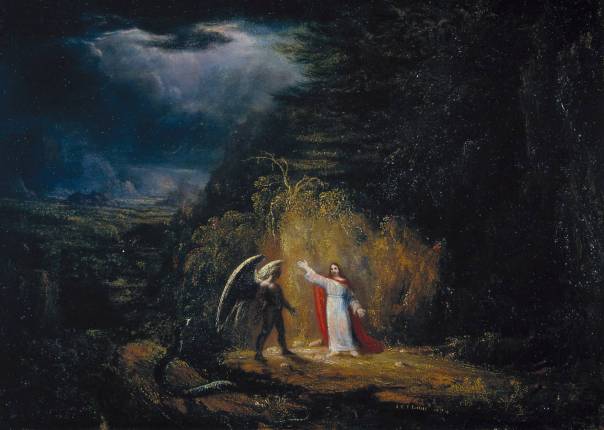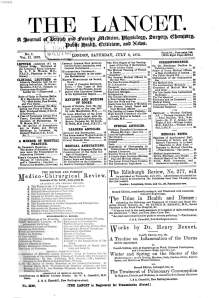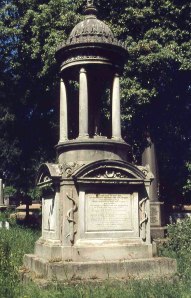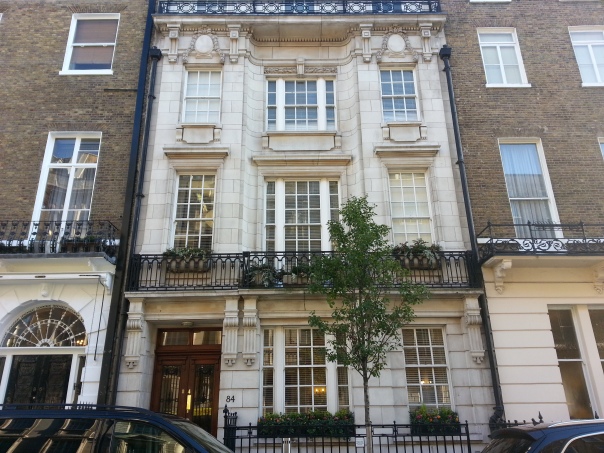This April Fools’ Day we take you on a trip back in time to the first half of the nineteenth century, when one man took a large portion of polite society for a ride with his pointless and pernicious cures for consumption.
Allow us to introduce ‘King of The Quacks’, ‘The Handsome Hoaxer of Harley Street’: Mr John St John Long.
It is October 1830, London society is gripped by a dramatic trial at the Old Bailey for manslaughter. The accused one John St John Long.
Mr St John Long has long been touted as the most successful “quack” practitioner in the London of his day. He is one of the first to set up on Harley Street , the area still synonymous with high class private clinics of both a reputable and less orthodox nature.
The manslaughter case is brought by a Mrs Cashin, a wealthy society lady who comes to London in August 1830 seeking a cure for her daughter’s consumption. Having heard much about Mr St John Long’s wonderful cure, she brings her daughter to him and he commences his treatment.
He applies a mixture of egg-yoke, vinegar and turpentine on the back shoulders and front.
The intention: to create a wound to bring the lung infection to the surface, with the resulting blister to be soothed with cabbage leaves.
But Miss Cashin’s wound, unsurprisingly perhaps, gets only worse and spreads.
She becomes extremely ill and, after several days, dies.
What the Cashins didn’t know is that St John Long has no medical training whatsoever. In fact he is a downright charlatan.
A good looking charmer, he had come from Cork, Ireland to London in 1822 to work as a painter, becoming a pupil of the much in vogue John Martin, rendering vast biblical canvasses somewhat in the manner of his master (though not in anywhere like the same league).
One of his paintings in fact “The Temptation in the Wilderness” (shown below) remains in Tate Britain‘s collection, though is rarely on public show.
In 1827, not earning enough from his art, he turns his anatomical skills learnt, we assume, from life classes, to medical use, and sets himself up in practice. It is at this point that St John Long claims to have found a miraculous cure for tuberculosis, known at the time as consumption. He soon develops a prestigious clientele of aristocratic young ladies, like Miss Cashin, treating them in the same way as that unfortunate young woman.
Within a few years, however, Mr St John Long’s methods are exposed in the expert medical journals, provoking a campaign by The Lancet which publishes an article on him entitled “The King of Humbugs”.
Then in 1830, in the midst of scandal, two of his patients, including Miss Cashin, die.
So, back to the Old Bailey…
Despite the testimony of tens of Mr St John Long’s high class patients in his defence, he is found guilty of manslaughter on the 30th of October 1830.
Only to be fined £250!
Though this was not an insubstantial sum, the evidently wealthy Mr St John Long flamboyantly pays the debt on the spot. To compound matters, at a subsequent trial, he is actually found not guilty for manslaughter for the other death in his care.
Notwithstanding the verdicts, the court cases cause uproar. Lenient judgements or no, St John Long becomes the butt of satire, and the opposition campaign to his cures continues with, if anything, increased vigour.
He gives up his practice in 1831 and life in 1834, being buried in Kensal Green Cemetery.
The inscription on the grandiose tomb reads:
“It is the fate of most men to have many enemies, and few friends. This monumental pile is not intended to mark the career but to shew how much its inhabitant was respected by those who knew his worth and the benefits derived from his remedial discovery. He is now at rest and far beyond the praises or censures of this world.”
But the “humbug” did not end with St John Long’s death.
Gossip prevailed that he fell victim to consumption himself after having refused to receive his own treatment!
Sadly, there is no clear evidence of how he actually died.
One more secret that “The Handsome Hoaxer of Harley Street” took to his miniature mausoleum with him.
Above is the anonymous and unmarked location on current day Harley Street near where the ‘King of Humbugs’ had his consumption clinic.
John St John Long is just one of the great figures featuring on our walk, “Harley Street: Healers and Hoaxers” for more information and dates click here.







